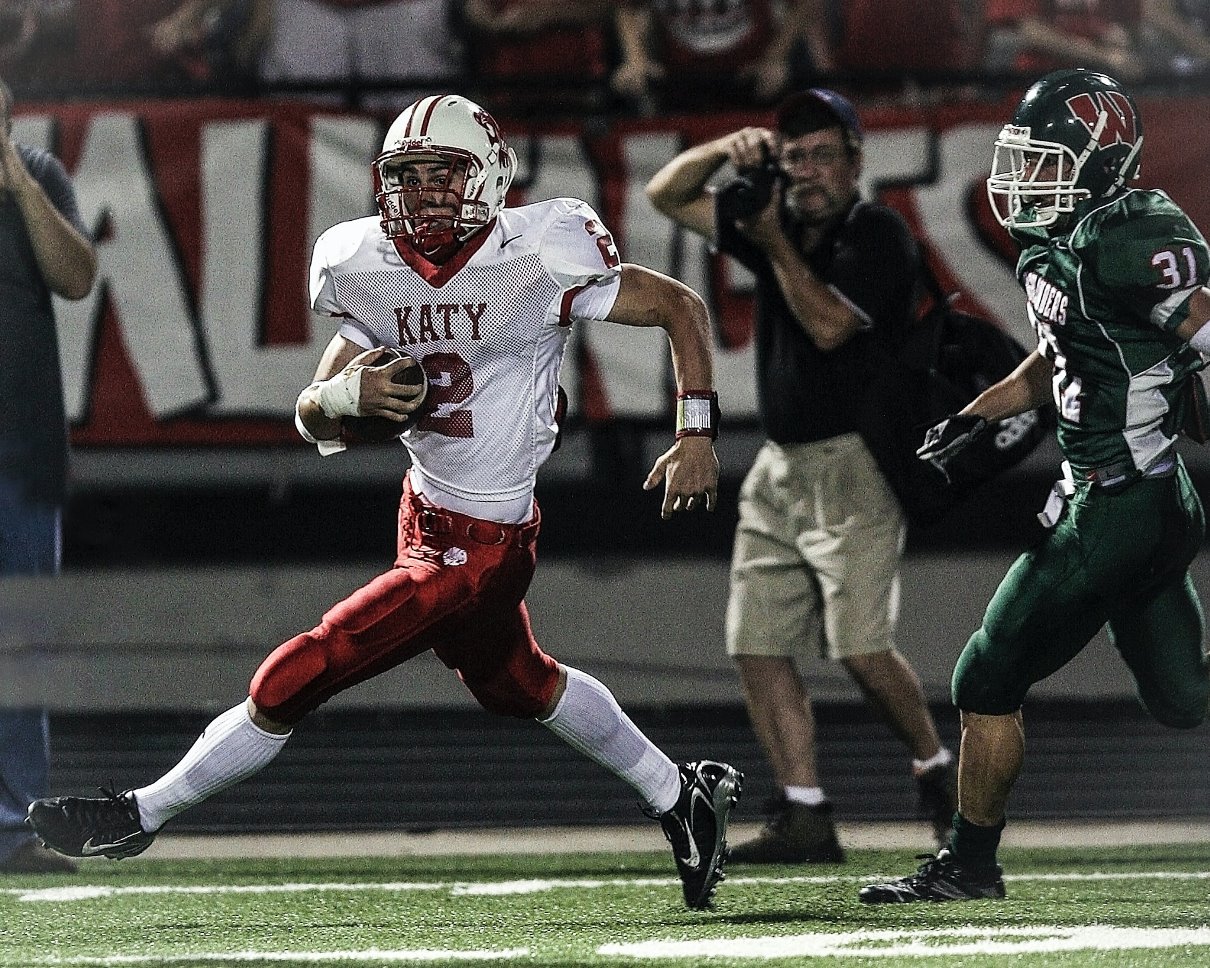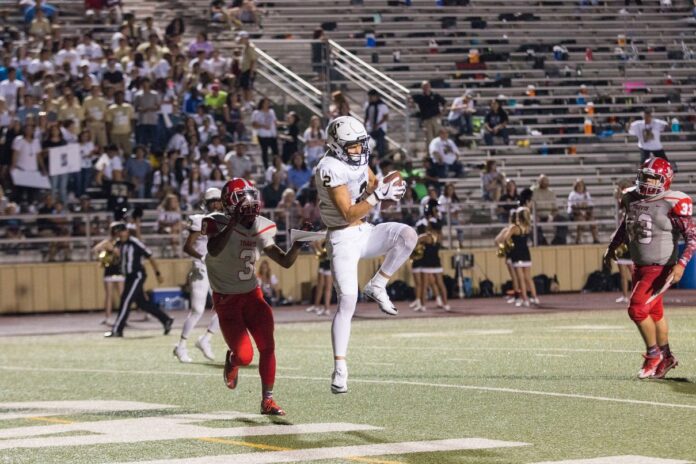Multiple studies and surveys have shown that the average height of an NFL player is 6 feet 2 inches. On the other hand, not all jobs are created equal, and one’s typical height may be segmented according to their position. The average height is around 5 feet 10 inches. The OL, with a height of around 6 feet 4 inches, has the highest average.
Through time, we have become used to mental representations of large athletes with intimidating heights and imposing physiques. They have extraordinary endurance as well as speed. What is the average height of an NFL player? The typical NFL player is 6 feet 2 inches (1.88 meters) tall and weighs 216 pounds (98 kilograms), according to a CNN poll from 2014.
To have a better understanding of the average height of an NFL player, let’s keep reading with Sportda, shall we?
The Average Height of an NFL Player by Different Positions
The National Football League, sometimes known as the NFL, is a large sports league that has a substantial impact on the lives of millions of people in the United States. The average height of an NFL player in the National Football League is 74.14 inches, with a margin of error of.3211 inches on the upper end of the scale.
The men who played professional football may have been any kind of guy. Because most player changes were prohibited under the game’s regulations at the time, it seemed that each player needed to be capable of playing both attacking and defensive roles.
At that time, the popularity of the game was not very great, which contributed to the comparatively low level of the wage. In order for the players to maintain their standard of living outside of the league, they were required to work other jobs. They are physically more noticeable and strong than ordinary people as a result of this, despite the fact that their height is rather normal.
When a league grows in popularity, the amount of money it can pay its players responds by becoming much more competitive. Alterations are also being made to the regulations and entrance requirements progressively. Now, only the very best athletes are good enough to participate in the National Football League.
For high school and college football players, the National Football League (NFL) is the league of their dreams since the average early-season wage is around $2.25 million. Additionally, the proportions of their bodies began to shift over time. The vast majority of the players are taller and have better muscular mass than the average person.
In order for players to be successful in their roles, each position will have its own unique height and weight requirements, as well as its own set of rituals.
What Position Has the Tallest Average Position In The NFL?
No matter which club you look at, the offensive line is the position with the highest average height in the National Football League. Being tall has a variety of benefits and advantages. When you need to become engaged in scrimmages, as the offensive line often does, you have a major edge. This is the most important benefit. Additionally, having a minor reach advantage might be advantageous in some situations.
Between 6 feet 4 and 6 feet 5, the offensive line has an average height between those two numbers. When you’re a taller player, you often have a longer reach and are able to cover more distance. This makes it much simpler for you to cope with other players who are big, powerful, or explosive.
Protecting your quarterback, who is often not the tallest player on the field and who may even be lower than 6 feet on occasion, is of the utmost importance. Always keep in mind that all that is required of the quarterback is a strong arm, intellect, exceptional awareness, and accuracy.
NFL Quarterback
The average height of a QB is 75.43 inches, and the average weight is 224.97 pounds.
In both American and Canadian football, taller quarterbacks will have an edge over their opponents. When the quarterback is tossing the ball or is in the pocket, they will be able to see huge offensive and defensive linemen easily above their heads.
Peyton Manning, a future inductee into the Pro Football Hall of Fame, and Tom Brady, a former player for the Dallas Cowboys, are the two most glaring examples. The height of these two outstanding quarterbacks was comparable, coming in at an average of 6 feet 5 inches (1.96 meters).
Even though Doug Flutie was the college football player of the year and was awarded the Heisman Trophy, the clubs in the NFL Draft are still not quite sure what to make of him. Many people believe that Fluttie, who is 5 feet 9 inches (1.75 meters) tall, is too short for this job.
However, despite this, a quarterback who is shorter than a normal player maintains an outstanding balance. They rapidly go under a tackle in order to avoid getting covered better, and this allows them to continue playing. Eddie LeBaron, who played quarterback for the Washington Football Team in the past, noted that even players with shorter statures could throw the ball higher than their arm’s length. If they block, it will be embarrassing for the defense.
A quicker release time is another advantage of having a shorter quarterback as opposed to a tall quarterback.

Wide Receiver
The average height of the Wide Receiver is 72.40 and its weight is 200.32 lbs. Wide receiver is a position that requires a player to be tall. When it comes to catching passes sent high in the air, tall players have a huge advantage against shorter defensive defenders. However, this advantage is not without its limitations since athletes who are too tall sometimes lack agility and general strength.
Running Back
The average height of Running Back is 70.73inc and the weight is 212.48 lbs. Running back is a position that is often played by athletes that have a smaller build. Because of their small height and low center of gravity, it might be challenging for opponents to efficiently manage them. They are also able to simply avoid being caught behind the huge offensive line that caused problems for the defensive players in the first place. Running backs who are less than 6 feet 0 inches (1.83 meters) are seen on the field a great deal more often than players who are taller than 6 feet 3 inches (1.91 meters).
Barry Sanders, a former winner of the Heisman Trophy who is 5 feet 8 inches (1.73 meters) tall, is a great example of a running back. He is a member of the Pro Football Hall of Fame. In spite of his diminutive stature, he does quite well in his profession.
Defensive End
They are responsible for preventing screen passes and moving outside the offensive tackles in order to get a sack. The defensive ends for a 3-4 defense typically range in height from 6 feet 3 inches to 6 feet 8 inches and weigh between 285 and 315 pounds.
The ideal defensive ends for a 4–3 scheme are athletic and nimble, with a focus on moving up the field fast. Their typical weight ranges from 265 to 295 pounds (120 to 134 kg), and they have a high level of agility.
Tight End
The average height of Tight End is 76.54 inches, and the average weight is 254.26 lbs. To successfully stop the other team from completing passes, tight ends need to have a large frame and an incredible vertical. The fact that tight ends often run shorter distances and don’t experience strength loss offers them an additional edge over wide receivers (WRs). The average height of a standard player is more than 6 feet 4 inches (1.93 meters).
Defensive Back
The average height of an NFL defensive tackle is 75.31 inches, which is equivalent to being approximately 6 feet, 3 and a half inches tall.
On the contrary, shorter defensive backs are utilized because of their greater agility. This is because the position requires players to be able to swiftly shift directions, and shorter players tend to have this skill.
Defensive and Offensive Linemen
The average height is 76.75 icc and the weight is 314.16 lbs. In order to be huge enough to play their roles well, offensive and defensive formations often need to be at least 6 feet 1 inch (1.85 meters) tall, and sometimes need to be as tall as 6 feet 8 inches (2.03 meters). The very high height gives defensive midfielders an advantage since it enables them to intercept passes with their arms spread out in front of them.
FAQ’s
Should defensive backs be fast?
Cornerbacks and safeties must chase receivers across the field. As we’ll see, speed and agility are vital, but a DB’s ability to swiftly change direction may be more important.
Is 6 ft. 5 a good height for NFL players?
6’5″ is ideal. 6’3″ males are taller than 95% of American men. American guys average 5’9″ to 5’10”.
Who is the shortest player in NFL Combine history?
One NFL Scouting Combine running back made history. Deuce Vaughn (5’5) is the combine’s smallest player since 2003.
Who is the longest QB to play for one team?
Unexpectedly, Dak Prescott is the NFL’s longest-tenured starting quarterback. Only Aaron Rodgers, Derek Carr, and Dak Prescott started with the same team for six years at the start of the 2022 season, according to CBS Sports.
Who is the largest NFL player?
Offensive tackle for the Green Bay Packers Caleb Jones, a tackle for the Indianapolis Colts, Alfredo Gutierrez, an offensive blocker for the San Francisco 49ers, Jordan Murray, a tackle for the New York Giants, Roy Mbaeteka, a tight end At 6 feet 9 inches, Austin Allen is the biggest player in the NFL.
Who Is The Smallest Tight End In NFL History?
Trindon Holliday is the NFL’s smallest player in 25 years at 5’5″ (1.65 m). Holliday’s football career started poorly. As a sprinter, Holliday competed nationally. He chose football over athletics. Holliday outran everyone, despite his small size. He entered the NFL Draft after LSU. The Texans selected this speedy kick/punt returner in the sixth round of the 2010 Draft.
Conclusion!
What is the average height of an NFL player? In conclusion, an NFL player is typically 6 feet 2 inches tall and weighs about 245 pounds. Aiming for the NFL is a worthy aspiration for any young athlete. The significance of diverse viewpoints There are a lot of wide receivers, backs, and corners that are shorter than this.
To be successful in football, you need to have a standard physique in terms of your health as well as your weight and height. Football is a physically demanding activity. We certainly hope the data we provided was useful in guiding you toward the best career path.


